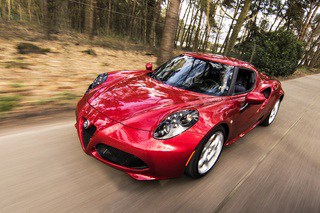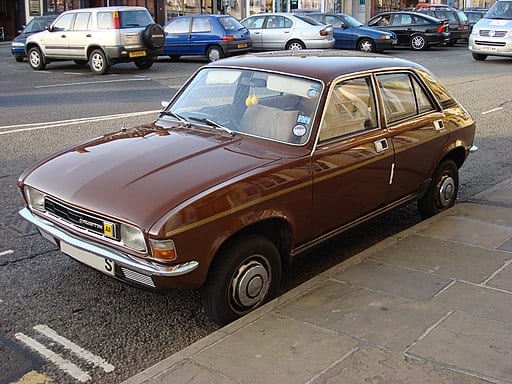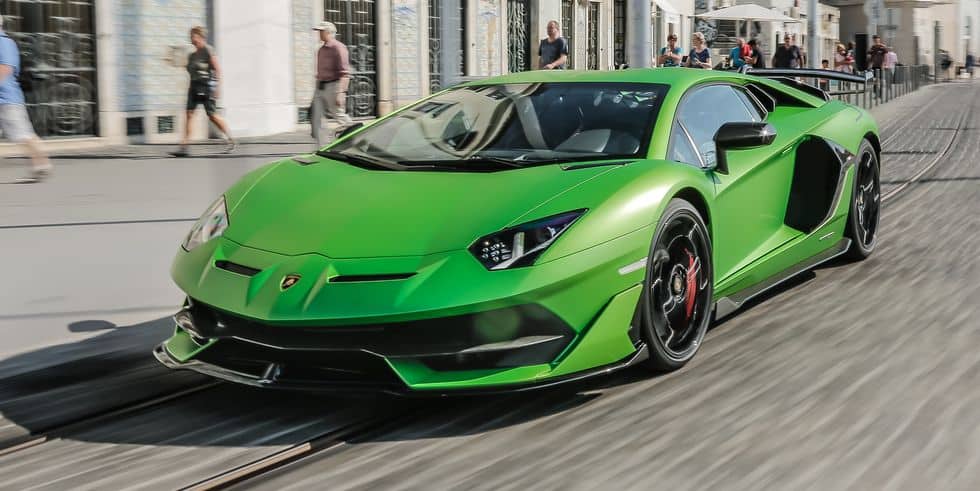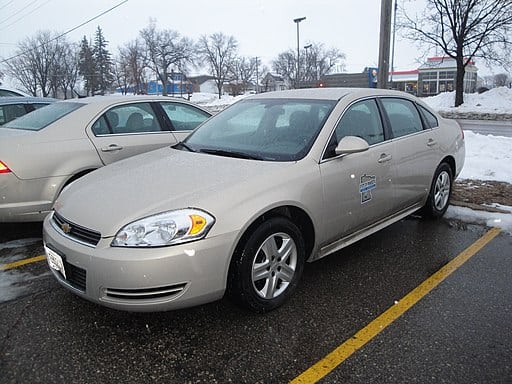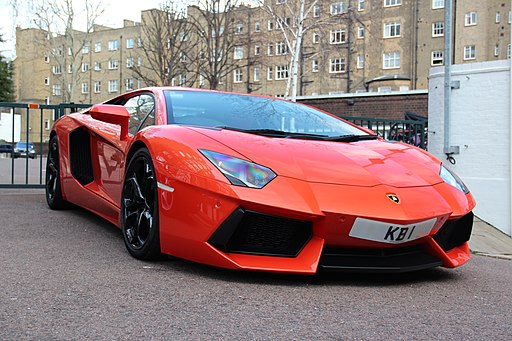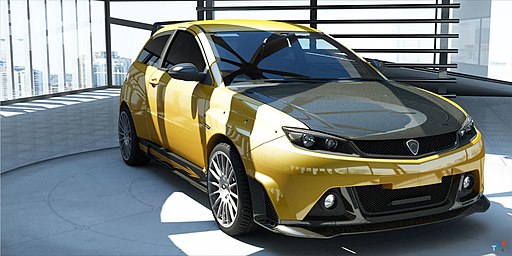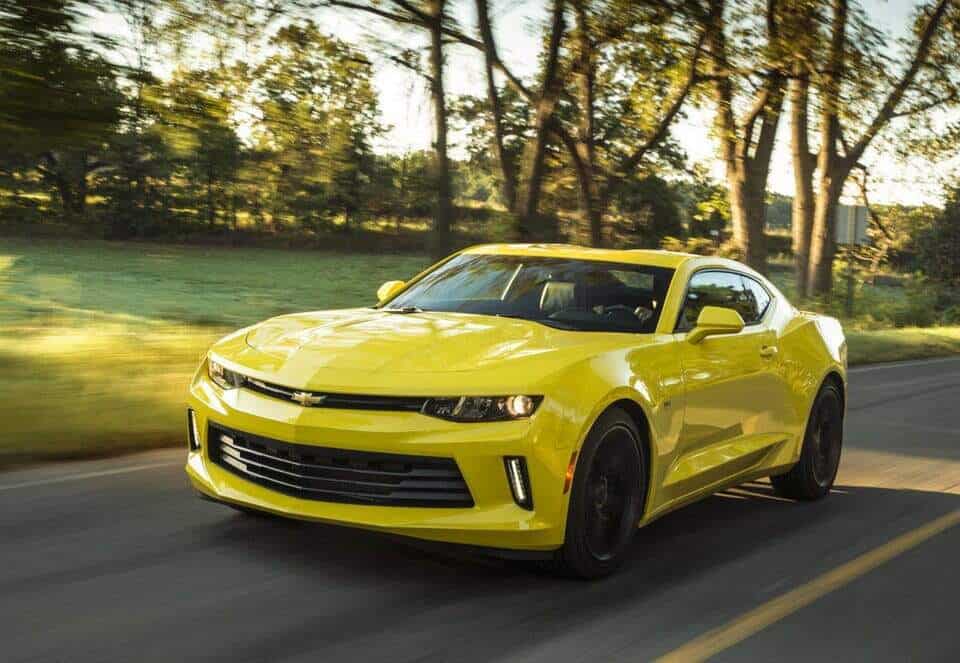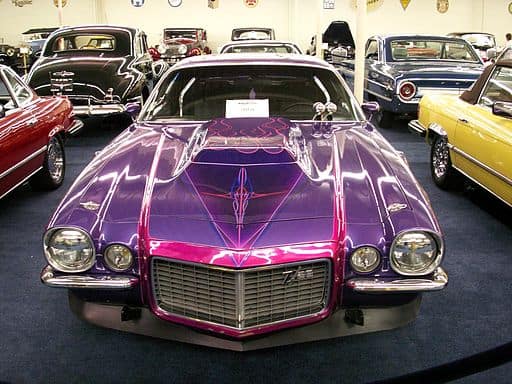Aesthetics are deeply entwined with the culture. The preferences of color or style are mostly shaped by the culture and society we grow up in. However, when it comes to the automobile, we can see the preference for exterior paint color is almost always standard across the globe.
Moreover, it has remained surprisingly consistent over the last few decades. Of course, certain trends came and went, but they could never disrupt the overall market.
Gray scale colors such as white, black, gray, and silver dominate the automobile market. The same applies to the US market as well. 70%-75% of the cars produced globally come in any of these four colors, while almost always white tops the list.
In this article, we will talk about the 8 rarest colors for cars in the US. We made this list based on a study done by iSeeCars.com in 2019. It surveyed over 9.4 million one-to-five years old used vehicles sold in the US to determine the percentage share for each color.
9. Red
State where it’s most popular: West Virginia
3-year-depreciation: 14%

photo source: www.pexels.com
Red is the most common car color after the gray-scale colors in the US. The study found that 10.3% of the cars on US roads were red.
The red color is a popular choice for sports cars. It offers a vibrant and youthful look. In general, bright color vehicles are more visible and thus are less prone to accidents. However, this logic does not apply to red cars.
Studies show that red color cars have a higher risk of getting into a car accident.
Red color cars are more visible in the foggy, rainy, or snowy weather. However, the color doesn’t look as bright in the night-light condition. A red car can easily blend with traffic elements such as brake lights, traffic lights, and road signs.
Did you know?
According to a survey conducted among car owners, men are 12% more likely to buy a red car, while women are 9% more likely to buy a silver car.
8. Blue
State where it’s most popular: Alaska
3-year-depreciation: 14.3%

photo source: commons.wikimedia.org
In the US, the percentage share of blue color cars is slightly less than red cars. However, a 2021 study shows that globally blue is the most popular color for automobiles after grayscale.
Blue cars are shiny and glossy, while the paint is new. As it is a comparatively rarer color, it attracts the attention of others on the road. Blue cars can also hide dirt and dust relatively well than many other colors. The color is also not as prone to fading as red.
One of the disadvantages of blue paint on the car’s exterior is it highlights the swirl and scratch marks. Even a fine scratch on the coat caused by washing can be visible, especially when under direct sunlight.
Did you know?
A car’s exterior paint colors have a significant impact on the resale value. Common colors usually have minimal impact. That means they do not reduce the resale value. However, they also do not help maintain the value.
7. Brown
State where it’s most popular: Maine
3-year-depreciation: 17.8%

photo source: commons.wikimedia.org
The color brown is significantly rarer for the automobile. The trend can be observed across the world. However, the percentage of brown color vehicles is relatively higher than in the US and Europe.
The main advantage of having a brown car is it hides the paint damage and bubbles well. The rust around the damaged areas is also less visible. However, it is difficult to keep the car clean-looking. Even when the car is clean, it may look dull and faded.
The depreciation rate is also the highest for brown cars. iSeeCars estimates that a brown car loses 17.8% value within three years. The difference from the manufacturer’s suggested retail price stands at $7,642.
Did you know?
In the first decade of 2000, many experts predicted that the brown color would soon become extinct as an automobile color. However, the color made a glorious comeback as leading car manufacturing companies, including BMW, Mercedes, Porche, and Roll-Royce, began to produce brown cars.
6. Green
State where it’s most popular: Idado
3-year-depreciation: 14%

photo source: hips.hearstapps.com
Although the popularity of green as an automobile color is decreasing in the US. A 2012 study found that green accounts for about 3% of cars on the street in the US. In the 2019 study, it stands for only 0.7%.
Green color hides dirt, dust, and mud splashes well than black and other dark colors. Thus, cleaning is comparatively easier. The color also stands out in the crowd due to its rarity. However, like any other less common colors finding a color match can be difficult for a respray.
Did you know?
Green was the official racing color in Britain. In 1902, England was to host the prestigious Gordon Bennet Motor Cup for the first time. However, the event had to be shifted to Ireland as Britain has a national speed limit of 12mph. As a mark of respect, British racers painted their vehicles shamrock green. Later, the color green became the official racing color of the country.
5. Beige
State where it’s most popular: Minnesota
3-year-depreciation: 14.4%

photo source: commons.wikimedia.org
Beige was once a popular automobile color. It marked prestige and aristocracy. However, the color has lost its glory, and now, it is often considered old-fashioned to own a beige or tan car.
Beige is one of the safest colors for cars. Studies have confirmed that it is much less likely for a beige color car to get involved in a crash.
Did you know?
The white color is considered the safest color for vehicles. Motorists can see a white car easily as white provides a sharp contrast between the car and its background.
Studies show white cars are 12% safer than their black counterparts under any weather and light conditions. It is one of the main causes of the popularity of white cars.
4. Orange
State where it’s most popular: Nebraska
3-year-depreciation: 10.7%

photo source: commons.wikimedia.org
Orange is a unique car color that offers a sporty look. It is still one of the most uncommon colors for cars in the US as well as the world.
The depreciation value of orange color cars is quite high, and owners may find it difficult to resell the car at a good price. However, it is much easier to keep the orange car clean-looking as it doesn’t show mud and dirt. Orange is also one of the safest cars on the road. Both its rarity and high visibility help motorists spot the car.
Did you know?
In recent years, orange cars have gained some popularity. During the last five years, many of the leading automobile companies launched new models painted with different shades of orange, and it is believed that the trend is here to stay.
3. Gold
State where it’s most popular: Georgia
3-year-depreciation: 16.7%

photo source: commons.wikimedia.org
Gold-painted cars symbolize luxury and opulence. This color is not for practical daily-use cars. The gold-painted cars also lose their resale value much faster than most other color cars.
One of the problems with gold paint is that the standard can vary widely. Best gold cars are the customized cars where actual gold is used in the painting. These cars are plated, and then the outer surface is protected.
Did you know?
Cars painted with rarer and bright colors are usually less likely to be stolen. Silver tops the list when it comes to the preference of car thieves.
2. Yellow
State where it’s most popular: New Hampshire
3-year-depreciation: 4.5%

photo source: forbes.com
If you look from the perspective of reselling the car, a yellow car is your best bet. It may come as a surprise to many, but yellow cars have the lowest depreciation rate.
Yellow is also one of the safest colors for the automobile. In some studies, the yellow color even tops white in terms of road safety. It is the most visible color during cloudy and snowy conditions. No wonder this color can be most frequently found in New Hampshire, the cloudiest state in the US. It is also the most common color for school buses across the world.
Did you know?
In the 1950s and 1960s, bright and vivid colors took over the automobile market. Sunflower yellow, grabber orange, pink, and metallic green became immensely popular during that period, with every manufacturer bringing out new models in these colors.
1. Purple
State where it’s most popular: Michigan
3-year-depreciation: 13.9%

photo source: commons.wikimedia.org
Purple has consistently been the rarest car color in the US for decades. The color was quite popular during the late 1960s and early 1970s; however, its popularity declined fast.
The exact reason people do not choose the color purple for their cars is unknown. Experts believe the color will make a comeback soon, along with other bright colors.
According to the color experts at Volkswagen, “the rise of social media and our need to make things stand out on small screens” will bring back the shiny colors.
A wide range of shades of purple is available for car paints, from muted purples to shiny metallic violets. Muted purples are difficult to keep clean, and a little dust can make them look muddy brown or red.
Did you know?
Purple-painted cars are known to the cop-magnets. It is a popular color choice for street racers. Thus, cops often pay special attention to this color while seen on the road.

